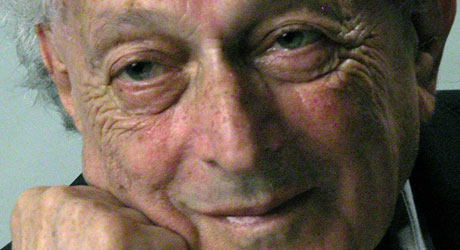
20th Century, Concerto, Works
My CONCERTO in the old style FOR THREE SOLO VIOLINS AND STRING ORCHESTRA was commissioned in 1994 by Marc Mostovoy for a group he founded, directed and conducted called the Concerto Soloists of Philadelphia (now called the Chamber Orchestra of Philadelphia, resident at the Kimmel Center). I completed the work in 1994 and dedicated it to Marc Mostovoy and his Concerto Soloists, who successfully premiered the work on January 8, 1995, at the Church of the Holy Trinity in Rittenhouse Square, Philadelphia. The solo violinists were Elizabeth Kaderabek, Richard Amoroso and Jennifer Haas. Tonight’s performance, with solo violinists Muneyoshi Takahashi, Kinga Augustyn, and Tzu-En Lee, will be the second performance of the work and a New York premiere.
For several years before the Philadelphia commission, I had been contemplating writing a concerto “in the old style.” Such a work by a contemporary composer is not as unusual as one might think. Many other composers have written works in the style of a previous era. This list would include such composers as Schoenberg, Prokofiev, Hindemith, Brahms, Stravinksy, Resphighi, and even Haydn. Since I had done a great deal of research into the music of the 18th and 19th centuries, I thought I would like to write a concerto grosso in the baroque style. I was delighted when the opportunity presented itself with the 1994 Mostovoy commission.
When I had completed my three-movement concerto, it turned out to be wholly original, albeit with obvious shades of Bach, Vivaldi and Townsend. The Bach and Vivaldi influences are clearly evident in the first and second movements, while Townsend predominates in the third (final) movement.
Structurally, the FIRST MOVEMENT is in a large three-part form with the first section being a statement of themes, the second section being a contrasting section (a kind of development section), and with the third section being a recapitulation of the themes of the first section.
The SECOND MOVEMENT is a Siciliana, which was a type of slow dance favored by Baroque composers for the slow movements of their concertos. This movement is in a kind of two-part form, where each part is repeated, yielding four sections (ABAB-Coda). The first section is the Siciliana theme itself, followed by a repeat of that theme by the piano. The second section is a contrasting section, played largely by the three solo violins. The third section is a repeat of the Siciliana theme in the first section. This is followed by a fourth section which is a repeat of the second section (which repeat also serves as a coda to the movement).
The THIRD MOVEMENT is in the classical rondo form, very much favored by Baroque and Classical composers. A (theme), B (contrasting section), A (theme), C (contrasting section), A (theme and coda). A large part of the C section has two of the three solo violins playing fast notes, while the first violin plays a more sustained lyrical melody. This style was favored by Bach and Vivaldi in the last movement of their concertos. Technically, in some places, the C section has the three solo violins playing in three different keys and three different rhythms all at the same time. This is strictly Townsend, and was not influenced by Bach or Vivaldi.
Notes by Douglas Townsend, NYC
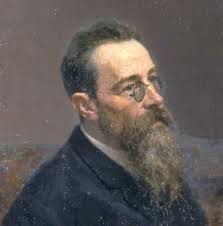
Concerto, Romantic, Works
Rimsky-Korsakov is best known for large-scale works – operas and symphonies, as well as chamber works, which are staples of Russian romantic music. Less-well known, however, is that he initially embarked on a career with the Russian navy.
After retiring from the service, he was appointed Inspector of Music Bands of the Navy in 1873 and held that post until 1884. During that time he familiarized himself extensively with wind and brass instruments, and composed a number of concert pieces to elevate the musical level of navy band performances. One of the pieces he wrote was the concerto for trombone and military band, a 3-movement work first performed in 1878.
The concerto shows off both the lyrical and technical aspects of the trombone. It opens right away with a heroic solo theme; moves to an introspective and lyrical middle movement; and ends in a rousing last movement heralded by trumpets and snare drum.
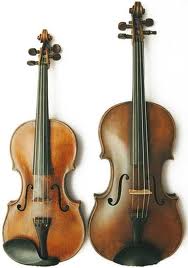
Classical, Concerto, Works
This piece represents one of the highest achievements of Mozart’s art. It is at once a symphony and a concerto, and showcases both the violin and the viola (the latter being an instrument particularly loved and played by Mozart himself).
The orchestra sets the mood at the outset in a magnificent opening section – majestic in style, with elegant contrasting sections, and featuring one of the most dramatic crescendos in all of the musical literature. The soloists make their subtle entrance entwined with the end of the opening orchestral section. Mozart gives the soloists their own distinctive themes, with orchestral accompaniment interspersed with vigorous symphonic sections; a lengthy double cadenza leads to a rousing ending.
The lovely second movement is set in the contrasting key of C minor, which Mozart uses to convey themes of great poignance and emotion (albeit in his restrained classical style), with its own cadenza for the soloists. The third movement is a spritely rondo, with lively themes taken up by the orchestra and soloists in turn. After a final rising flourish by the soloists, the piece ends joyously
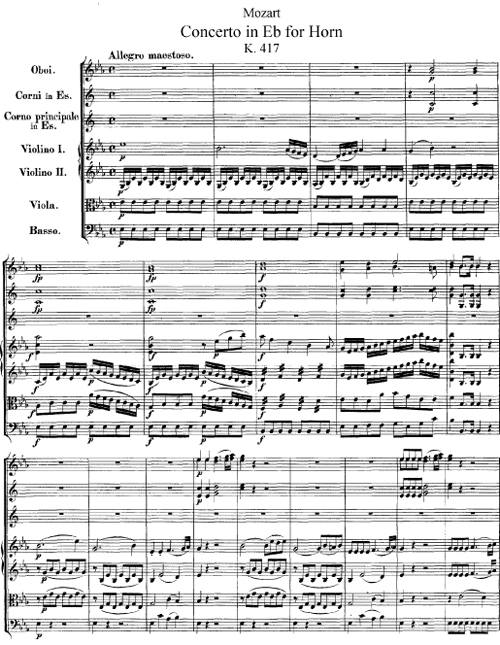
Classical, Concerto, Works
Between 1783 and 1791 Mozart wrote four horn concertos and a horn quintet. All of these works were dedicated to one person – Joseph Leutgeb. Leutgeb was an acclaimed performer and one of Mozart’s closest friends in Vienna. Indeed, their friendship was so close that it enabled Mozart to take the liberty of inscribing on the title page of the concerto: “Mozart takes pity on Leutgeb, ass, ox, and simpleton, at Vienna, March 27, 1783.”
Typically childish Mozartean cynicism aside, all the four concertos long ago formed an important part of the horn repertoire and even today continue to challenge even the most celebrated masters of the instrument. The first movement of the concerto is a sonata allegro based on two contrasting themes. The first theme has a march-like character and solid tonal plan – in contrast to the second “female” theme with its singing quality. A new episode (B minor) introduced in the development section deserves special attention.
The second movement is a peaceful Andante with beautiful cantilenas in the solo part. These arresting melodies must have been a perfect match to Leutgeb’s famous singing tone on the horn. The last movement is a rondo (ABACABA) in the rhythm of a cheerful dance. An important element of this movement is the frequent use of trills, which – when the concerto was written – created tremendous difficulty for the performer.
Concerto, Romantic, Works
Édouard Lalo (1823-1892) was a prominent French romantic composer. He attended the Paris Conservatory and was active as a string player and teacher. He became well-known as a composer of orchestral and chamber music, including such works as the Symphonie Espagnole for violin and orchestra, his symphony in G minor, and the D minor ‘cello concerto.
This concerto is in three movements. A slow opening 8-bar orchestral theme (Prelude-Lento) leads to a fantasy/recitative between the solo ‘cello and the orchestra, before jumping into the dramatic main theme (Allegro maestoso). The middle movement has two contrasting sections – a romantic wistful Andantino, followed by a sprightly Spanish-style Allegro presto; both are repeated, with the movement ending in soft pizzicati by soloist and orchestra. The last movement opens with a somber ‘cello recitative (Introduction-Andante); after a brief orchestral statement in the minor key, the ‘cello sets the tone for a joyous rondo in D major (Rondo-Allegro vivace). The Rondo features brilliant solo passagework set off by contrasting orchestral sections.
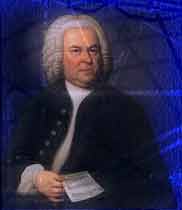
Baroque, Concerto, Works
In 1721 Bach dedicated a set of six concerti for diverse instruments to Markgraf Christian Ludwig of Brandenburg. At that time Bach was the resident Kapellmeister for Prince Leopold of Anhalt-Cöthen, and was in the midst of composing some of his best -known instrumental works. The “Brandenburg Concerti” are indeed a remarkable collection, each featuring unique combinations of instruments.
His Concerto No. 1 is noteworthy for featuring two “hunting horns” – the first ever use of horns in such a work. Together with the horns, this work features three oboes, bassoon, solo violin and strings. It has four movements (the only Brandenburg concerto to have that many).
The opening allegro is filled with counterpoint among the horns, oboes, strings and solo violin. The melodious second movement features solo passages in canon between the solo oboe and solo violin. A lively third movement follows, with robust orchestral passages offset by solos. The fourth movement is unique, with an opening menuetto for full ensemble; a trio featuring oboes and bassoon; a “Polacca”, or formal polonaise, section played by the strings; and a second trio featuring horns and oboes.
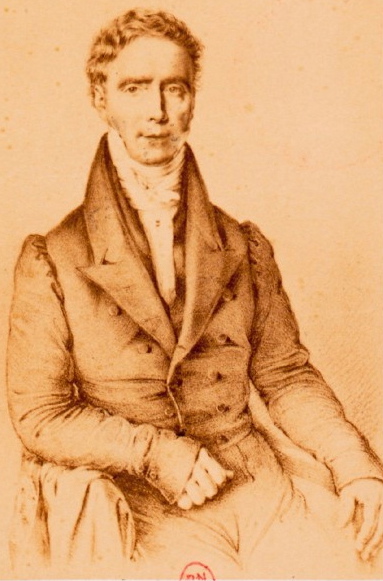
Classical, Concerto, Works
Born in Venice, Domenico Dragonetti (1763-1846) was the pre-eminent double-bass virtuoso of his time. Early on, he displayed his remarkable musical gifts on the violin and guitar before turning to the double bass, at which he excelled.
Appointed to the orchestra at San Marco in Venice at the age of 18, he became famous and sought after as a performer in Italy, Russia and England. He took up residence in London in 1794 where, except for occasional trips, he resided for the rest of his life. He made the acquaintance of both Haydn and Beethoven, whom he favorably impressed with his playing.
In addition to his performing career, Dragonetti composed many works for the double-bass, with this concerto being among the best-known. It is a three-movement work in the classical style, and displays the full range of the double bass, with much of the work in the high register. There are pyrotechnics galore, including passages consisting entirely of harmonics, which indicate the technical brilliance of which Dragonetti was capable.
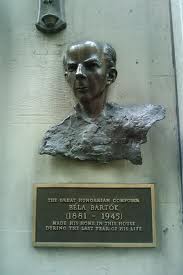
20th Century, Concerto, Works
 If you walk along 57th Street near Broadway, you can still see it. On the side of an ordinary-looking building, a small bronze plaque: “The great Hungarian composer Béla Bartók (1881-1945) made his home in this house during the last year of his life.”
If you walk along 57th Street near Broadway, you can still see it. On the side of an ordinary-looking building, a small bronze plaque: “The great Hungarian composer Béla Bartók (1881-1945) made his home in this house during the last year of his life.”
Each time I pass this spot, I think of the man who, dying of leukemia in a tiny apartment, far from his beloved Hungary, composed this surprisingly positive concerto during the summer of 1945. He wrote it as a birthday gift for his wife, the pianist Ditta Pásztory Bartók. It is likely that he hoped it would provide her with some income after his death. Bartók completed all but the last seventeen bars himself; these last measures were orchestrated by his composer-friend Tibor Serly, based on Bartók’s sketches.
It is easy to hear the second movement (Adagio religioso) as a response to Bartók’s own illness. True or not, there is one other quite definite reference: to Beethoven’s string quartet in A-minor, op. 132, which he composed after a serious illness.
Profoundly beautiful as the concerto’s second movement is, the gracefulness of the first and the impetuous energy of the third are equally compelling. This is about as far from death-haunted music as one can get. I hear it in my mind everytime I’m on 57th Street, and I’m always astonished.

20th Century, Concerto, Works
Born in 1865, Jean Sibelius grew to be considered a national hero in his native Finland. A Romantic Nationalist, Sibelius even had his picture on the $100 Mark for a time.
Sibelius’s rise to fame came as Finland was fighting for independence against Lenin and the Soviet Union. “Finlandia,” one of Sibelius’s most famous works, was written during this period and at one point was considered the Finnish national anthem.
As a boy, Sibelius had dreams of becoming a famous virtuoso violinist. However, he started his training as a lawyer at the University of Helsinki. His love for music eventually got the best of him, and he transferred to what is now the Sibelius Academy of Music, which at the time was called the Helsinki School of Music.
Widely known as a symphonist, Sibelius wrote seven symphonies and had agreed to write an eighth, which was scheduled for a premiere but never came to fruition.
Sibelius’s Violin Concerto (the only concerto he wrote) is symphonic in scope and is marked by melancholy melodies and dark harmonies. Sibelius uses the violin as part of the texture while displaying the instrument’s virtuosic qualities and giving the orchestra equal importance.
Though Sibelius was himself a violinist, he composed only one violin concerto. This music did not come easily, perhaps because he was so close to the instrument.
The violin concerto was premiered in Helsinki in February 8th, 1904 and was considered a disaster. This was partially Sibelius’ fault as he didn’t finish the piece until the last minute and therefore didn’t give the soloist enough time to learn it.
After the first performance, Sibelius revised the work extensively to the version we know today. It was given a second “premeire” in Berlin, conducted by Richard Strauss, and was received very well. After this performance it was played a few more times, but slipped into obscurity until 1991 when the Sibelius estate allowed one performance and one recording to be published. Since that time it has become a mainstay in the violin repertoire.
By 1903, Sibelius had already composed his first two symphonies and a series of overtly nationalistic works: the Karelia Suite; the choral “Kullervo” symphony; the four Lemminkäinen legends; and the famous tone-poem Finlandia. All of these bore the hallmarks of late Romanticism; but his style was about to undergo a marked change.
By the time of the Third Symphony (1907), his music had become harder-edged, condensed, and rigorously organized. The Violin Concerto thus stands at a turning point in Sibelius’s output. Janus-like, it looks two ways at once: back towards the expressive romanticism of his earlier years, and forwards toward the concise, rugged, highly concentrated music of his future. Both of these elements can be heard in this work, which remains one of the pinnacles of the violin concerto repertoire.
Concerto, Romantic, Works
This concerto was Brahms’ first attempt at symphonic writing. He sketched the majority of the work in 1856. For a while it took the form of a two-piano sonata; then he orchestrated it, striving for a symphony. Finally, it was completed as a piano concerto, but one very different in nature from the piano concertos of its era.
Material from the symphony’s first and second movements was retained for the concerto; the last movement was replaced with an upbeat Rondo in Hungarian style. From the dramatic opening of the forceful theme to the rousing finale, the piano weaves in and out of the texture and becomes an integral part of the whole piece. In the slow Adagio, Brahms pays tribute to both Clara and Robert Schumann. In 1856, he wrote to Clara, “I am painting a lovely portrait of you. It is to be the Adagio.” The inscription on the original manuscript of this hymn-like movement is: “Benedictus qui venit in nominee Domini.” Aside from its religious connotations, it suggests a dedication to Robert Schumann, who had recently died, and whom Brahms referred to as “master” or Dominus.”







 If you walk along 57th Street near Broadway, you can still see it. On the side of an ordinary-looking building, a small bronze plaque: “The great Hungarian composer Béla Bartók (1881-1945) made his home in this house during the last year of his life.”
If you walk along 57th Street near Broadway, you can still see it. On the side of an ordinary-looking building, a small bronze plaque: “The great Hungarian composer Béla Bartók (1881-1945) made his home in this house during the last year of his life.”